You’ve probably heard of Ameraucana and Americana breeds if you desire chickens that lay blue eggs. Your research will also include Easter Eggers and Araucana, and at some point, you’ll feel very confused.
Are they all the same, are they all related, and what’s the main difference between them?
The Ameraucana and the Americana have beards and muffs, feathers, and legs of similar coloration, and the ability to lay blue eggs. However, these two breeds of chicken are not the same.
The main difference between Ameraucana and Americana is that one is purebred, while the other is a hybrid.
You might think, “Well, if it’s just about a pure bloodline, then it’s just a price issue.” Unfortunately, it’s not that simple.
Under the label of “pure breed,” you can rest assured that your chickens will lay blue eggs, be healthy, and have typical breed personalities. With hybrids, you are taking a gamble.
Keep reading to find out more!
Table of Contents
Ameraucana vs. Americana: Main Differences
| Ameraucana | Americana | |
| Breed Standardization | Recognized by American Poultry Association | Not recognized as a breed |
| Egg color | Blue eggs | Many shades of colors including blue, olive, white and brown |
| Price | Male: $18 Female: $20-25 | Male: $2.50 Female: $4-5 |
The Origin
Ameraucana
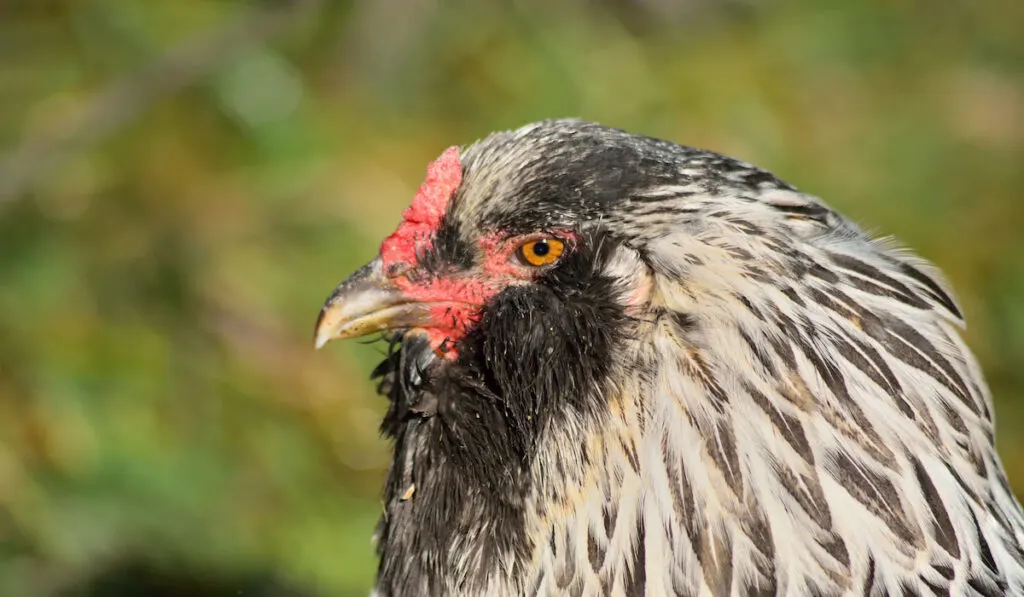
In 1927, a man from New York named Ward Brower Jr. found that some hens in Chile laid eggs with blue shells.
In the fall of 1930, a few chickens discovered in Chile were brought to the United States. They were called Araucanas after a part of Chile that the Spanish called Araucania.
The Araucana chicken is relatively rare in the United States these days due to reproductive difficulties.
For many years, poultry breeders attempted to develop a chicken breed with Araucana parents that would lay blue eggs with no genetic concerns.
Poultry breeders in the United States eventually settled on the Araucana as a breed to be standardized in 1976 as part of the American Standard of Perfection.
However, a breeder named Mike Gilbert continued to work on his unique blue-egg-laying chicken by crossing Araucana chickens with other breeds to create the perfect blue-egg-laying chicken.
He eventually succeeded. In the end, he was able to breed chickens that laid blue eggs and were free of the genetic defects that affect Araucanas.
He gave his chickens the name Ameraucana.
Ameraucana chickens are a dependable breed that consistently lays blue eggs. Their demeanor, appearance, and health are also reliable.
The American Standard of Perfection approved this relatively new breed in 1979 for bantam size and in 1984 for a standard size.
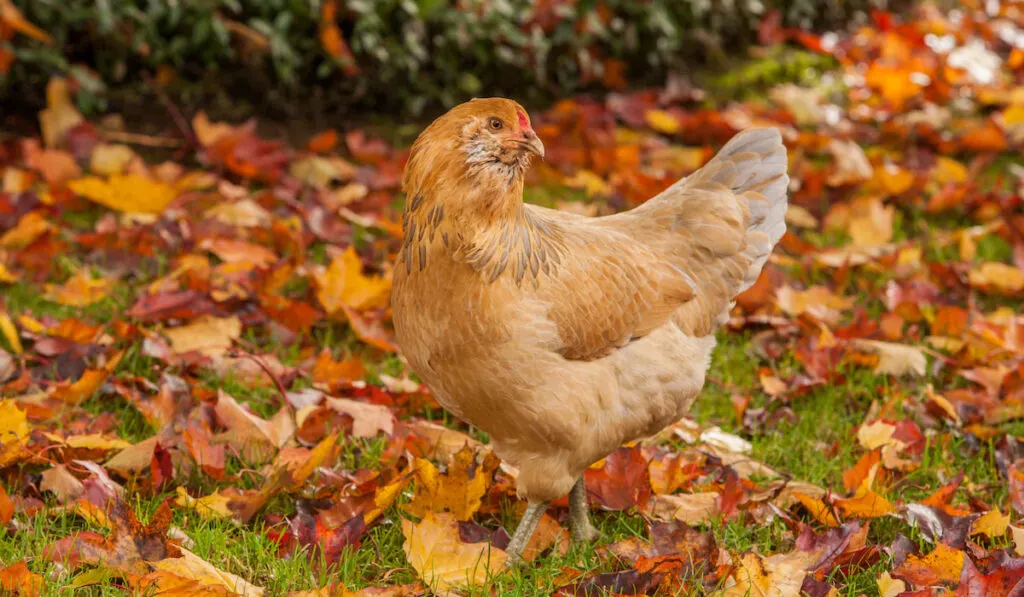
Americana
Americana, Americauna, Rainbow Layers, or Easter Eggers are all the names for the same hybrid chicken.
After the first blue-egg hens were brought in from Chile, many breeders started working to improve the original breed.
The main goal was to get rid of the Araucana Chile chickens’ defective genes so that they could reproduce healthily.
It took a long time, but finally, a new kind of chicken breed called Ameraucana was created.
Both Araucana and Ameraucana chickens are available now.
To top it all off, these two chickens are the only purebreds producing blue eggs.
Ameraucana is the only breed with the problematic gene removed, but it is also quite expensive. Araucana, on the other hand, still has breeding problems.
That’s why you’ll find hens in the market labeled “Easter Eggers” or “Rainbow Layers,” both of which are the results of breeding these two original breeds with others.
The names Americana and Americauna are also used for these birds; they are supposed to sound like purebred names in order to trick people into thinking they are the real deal.
Eggs laid by chickens sold under the names Americana, Americauna, Easter Egger, and Rainbow Layer can be any of a wide variety of hues.
What’s more, not all farms that raise these hens breed for the same qualities. Easter Eggers is not a standardized breed.
Therefore, you can’t be confident that their offspring will have the same characteristics as their parents.
Eggs
Ameraucana
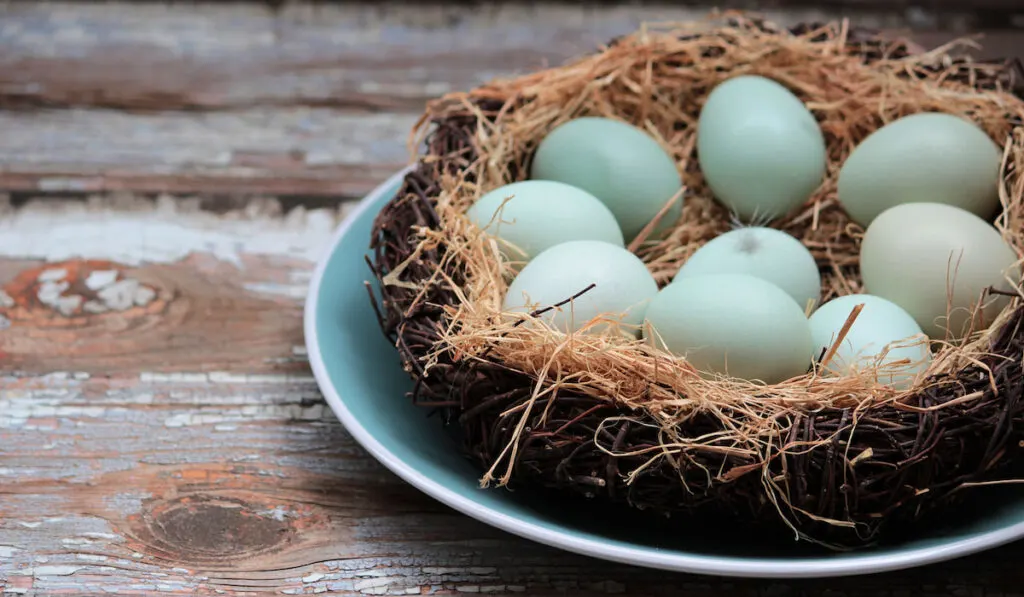
You can count on a steady supply of eggs from your Ameraucana hens for the better part of the year.
While they don’t produce as many eggs as some varieties created specifically for that purpose, they are still reliable.
The Ameraucana lay four big eggs each week, which works out to over 200 eggs per year, making them very good layers.
These eggs are typically large and similar in size.
All Ameraucana hens’ eggs are blue. If a chicken produces eggs of different hues, it is not a purebred Ameraucana.
They rarely go broody, so they spend the majority of their time laying those cute blue eggs.
Americana
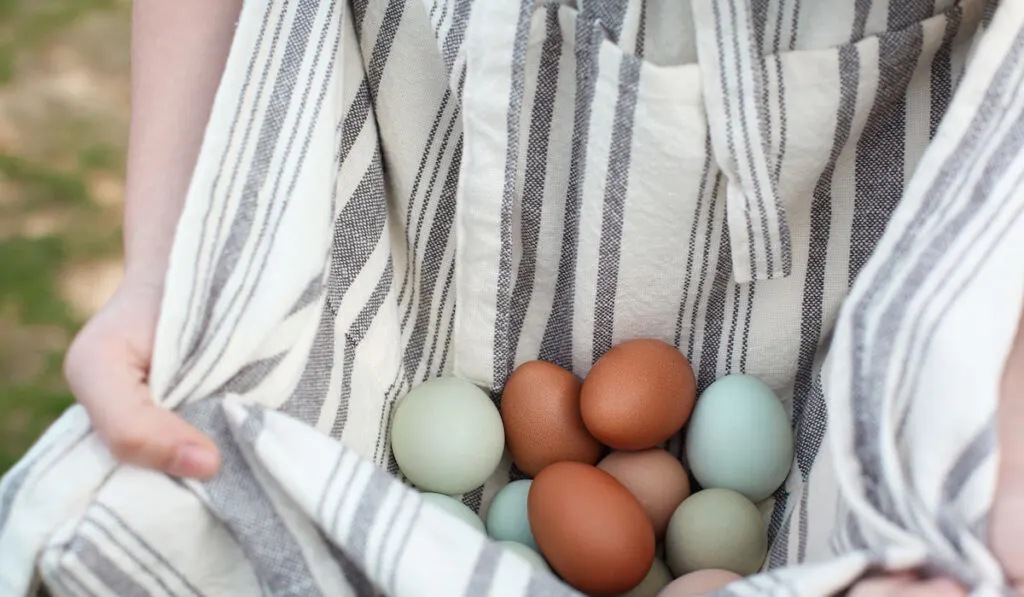
Like Ameraucana hens, Americana hens are good egg layers, laying roughly four eggs each week.
Americanas may produce a wide range of egg colors, including blue, green, olive, white, pinkish, light brown, and dark brown.
However, it’s important to remember that a hen’s egg color will not change throughout her life. The colors of their eggs remain consistent.
As for broodiness, you’ll find that the Americanas rarely go broody. They were explicitly raised to lay colored eggs, so breeders have worked hard to make them less likely to want to rear chicks.
Price
Ameraucana

Among chicken breeds, the Ameraucana is one of the most unique.
These hens are more expensive than other common backyard breeds, and if you pay the average price of roughly $10 for a hen, she is probably not a purebred Ameraucana.
The market rate for a true, purebred Ameraucana hen is around $20–$25, with roosters going for approximately $18.
Prices are also determined by the breeder, the color and bloodline of the chicken, and its availability.
Americana
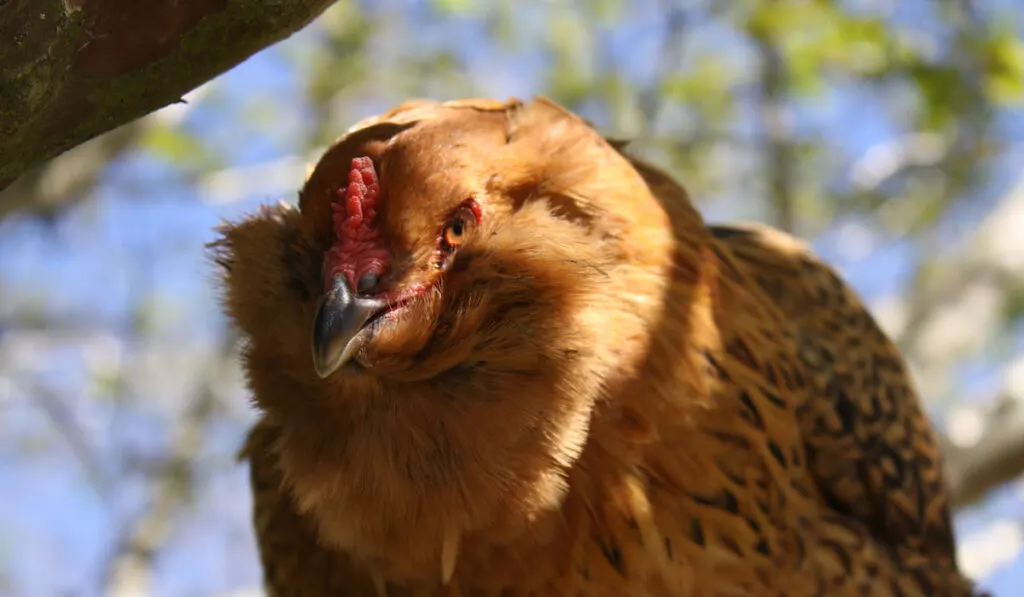
Because Americanas are not purebred chickens, breeders do not have to meet the requirements of American Standard of Perfection regulated breeders.
The breeders are under no duty to provide a certain quality of birds for sale and are allowed to breed their chickens however they see fit.
Because of this, you may find many more Americana chickens for sale.
Their prices are significantly lower than those of breed hens like the Araucana or Ameraucana.
You may buy a chick for as little as $2.50.
Appearance
Ameraucana
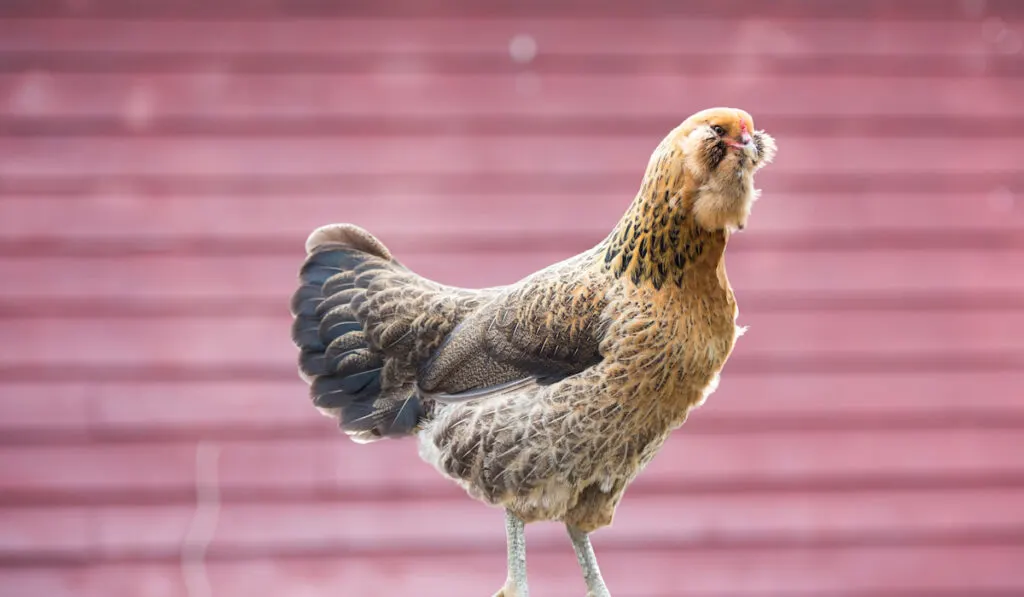
A chicken of the Ameraucana breed has a small, compact body, a wide chest, and a proudly held-up tail.
Ameraucana chickens are a lightweight chicken breed available in normal and bantam sizes.
Standard Size:
The average rooster weight is roughly 6.5 pounds.
The average hen weighs about 5.5 pounds.
Bantam Size:
The average rooster weight is roughly 30 ounces.
The average hen weighs about 26 ounces.
Ameraucanas have pea-sized combs. The comb is short and close to the head. It has three spikes that resemble peas, which is how the name “pea comb” came about.
They are one of the few breeds that have both beards and muffs. The Ameraucana’s fluffy face feathers are one of the breed’s most defining characteristics.
The American Standard of Perfection acknowledges the following color varieties in the Ameraucana chicken:
- Wheaten
- Blue Wheaten
- Blue
- Black
- Brown red
- Buff
- White
- Silver
Feathers come in a broad spectrum of colors, so the bird’s legs will blend in with its overall appearance. Legs can be any hue from black to silver blue.
Americana
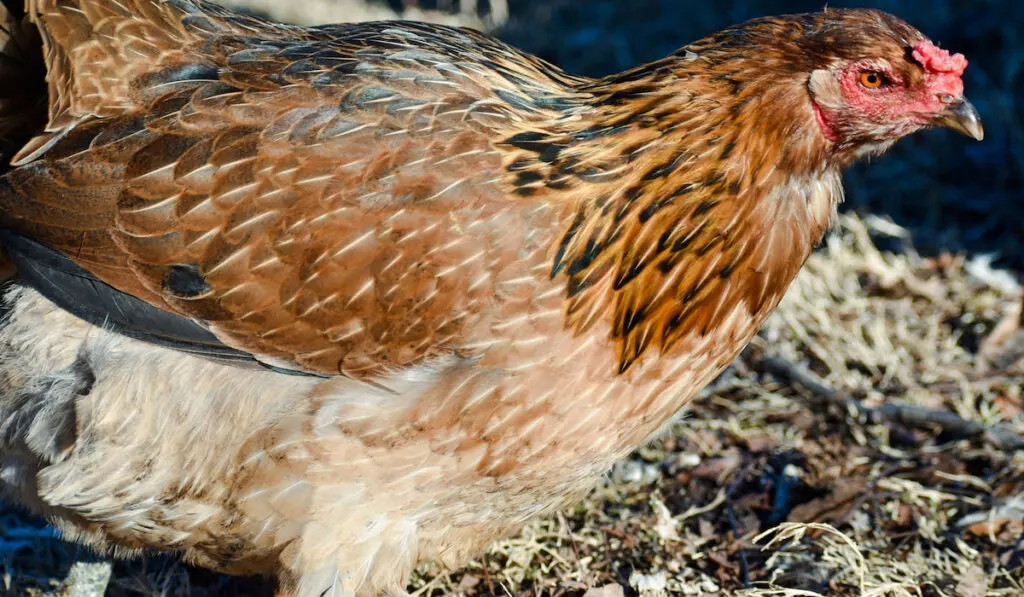
Features that define an Americana chicken is a kaleidoscope of possibilities.
It is impossible to provide a ‘genuine’ coloring of Easter Egger. Any color or combination of colors can be found in their feathers.
The main color of a bird’s feathers is determined by its parents’ coloration, which is mainly unknown or difficult to distinguish beyond Araucana or Ameraucana.
The majority of them are in the small chicken category. It’s safe to say that the roosters are roughly 5 pounds, and the hens are about 4 pounds.
Some birds may lack a tail due to Araucana genes. However, this is an exception rather than a rule.
Their earlobes can be any color, but they are usually red or white, and some birds have tufts on their ears. Both sexes have small, red wattles.
Any comb form is possible as the dominant genes determine it.
The same rule applies to the face. The muffs and beards may be present in full, in part, or not at all.
Most of the time, the legs are clean and any color, ranging from yellow to green to slate blue.
The Name
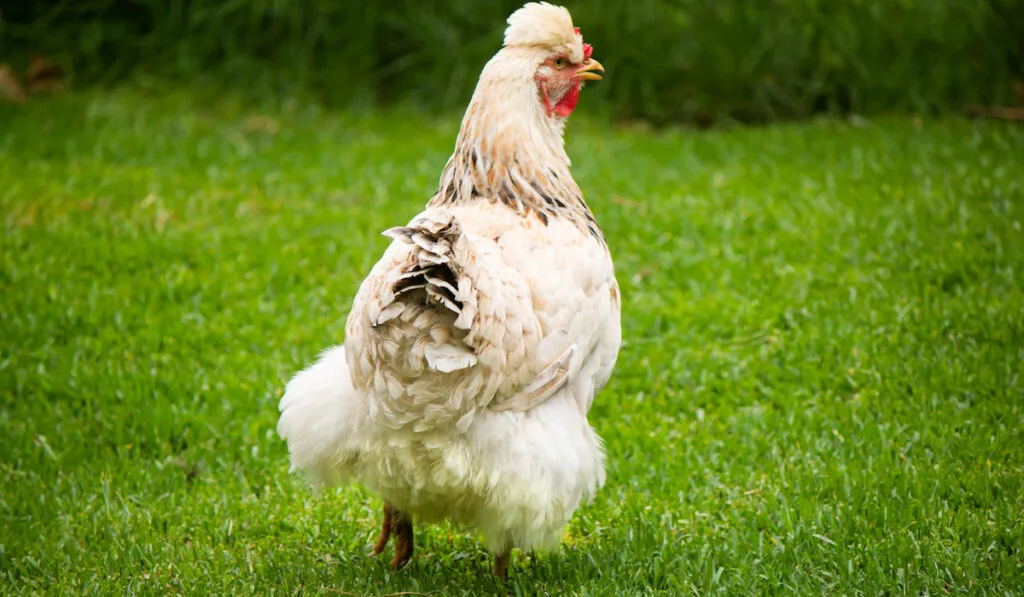
If you’re looking for Ameraucana chickens and see an ad for “Americanas,” you should know that this breed does not exist.
The name “Ameraucana” does not include an “i.” Buyers unfamiliar with chicken breeds may be misled by the incorrect spelling, which suggests that Americanas and Ameraucanas are the same birds.
Trying to sell hybrid chickens by giving them names that sound like the names of the original breeds is just a trick to get people to buy them.
Final Thoughts
If you want to find the best hen that lays blue eggs, you should consider what’s most important to you.
If you can spend a little more money and want to be sure that your eggs will be blue and that your hen will meet the standards for her breed, choose a purebred chicken.
But if you don’t mind a rainbow of colors in your egg basket, from green to blue to brown, and want to stay on budget, Americana might be the right choice.
In any case, take the time to find a reputable breeder and look at what other buyers have said if you can.
Resources
- https://www.cacklehatchery.com/blue-egg-chicken-ameraucana-or-americana/
- https://www.chickensandmore.com/easter-egger/
- https://petkeen.com/ameraucana-chicken/
- https://milefour.com/blogs/learn/easter-egger-chicken
- https://www.thehappychickencoop.com/easter-egger/
- https://the-chicken-chick.com/ameraucana-easter-egger-or-araucana/
- https://www.thehappychickencoop.com/easter-egger/
- https://www.mypetchicken.com/products/baby-chicks-easter-egger
